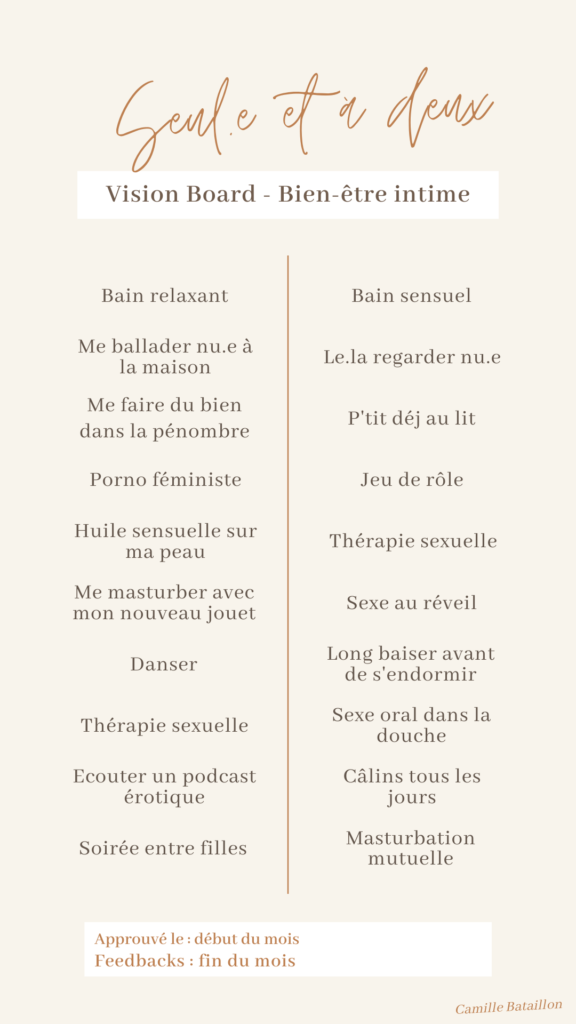Le Sexual Wellness Vision Board est un outil qui vous permet de suivre votre vie intime en solo et avec votre partenaire.
En consultation, je constate souvent que les couples se plaignent d’un manque de spontanéité dans l’impulsion sexuelle. Je leur demande alors ce qu’ils mettent en place pour prendre soin de leur vie intime et relationnelle ? Silence
L’erreur numéro une est de penser que le désir, la connexion, l’attraction sexuelle sont des choses qui doivent arriver seulement de manière spontanée. Cela peut très bien fonctionner au début et, à long terme, c’est plus compliqué. Que faire alors ? Agrémenter vos journées d’éléments érotiques qui nourrissent votre bien-être sexuel. Vous verrez dès les premières semaines les résultats.
Pour vous aider, j’ai réalisé ce tableau de vision afin que les couples mettent en place chaque mois des éléments érotiques qui viendront s’occuper de leur complicité et de leur bien-être sexuel.

Mode d’emploi
- Télécharger le template
- Au début du mois ou à une date rituelle mensuelle, installez-vous à deux pour remplir ensemble la colonne de droite. Notez les éléments érotiques que vous décidez tou.s.tes les deux de mettre en place pour le mois suivant.
- Puis, ensemble ou séparément, remplissez la colonne de gauche sur les choses que vous allez mettre en place pour prendre soin de vous, de votre plaisir. Votre temps en solo est extrêmement important. Ce temps vous permettra d’avoir une vie érotique de couple de meilleure qualité.
- À la fin du mois ou un mois après l’approbation du tableau de vision, asseyez-vous ensemble pour faire le point sur les choses que vous avez aimé, les moments forts de ce mois passé. Et, faites des ajustements sur les choses à améliorer pour les prochaines fois.
- Répétez ce processus chaque mois de votre relation. Et amusez-vous !
PS : Pour les thérapeutes de couples, ce tableau de vision peut être intéressant à utiliser comme outil en session.
This section of tips had been co-written with my colleague Camille Nerac. You can also find their illustrations on my Instagram page « camilleparlesexe«

